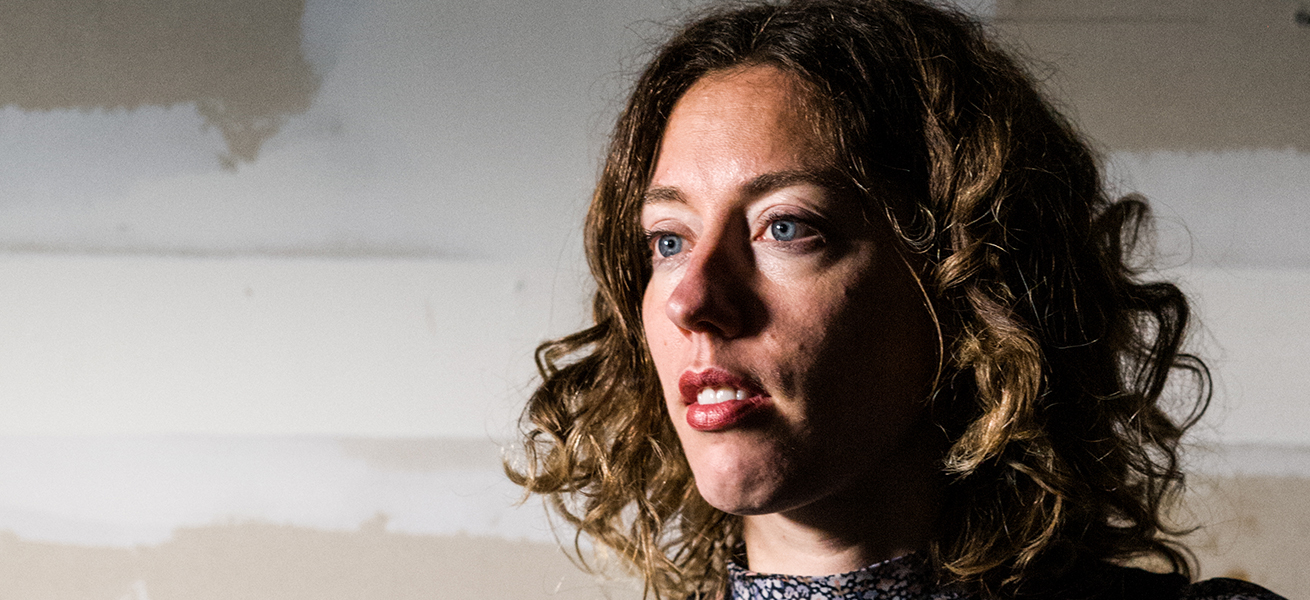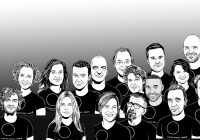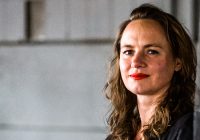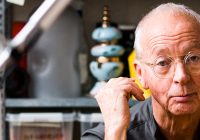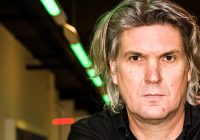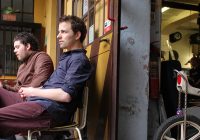Text: Viveka van de Vliet
Photography: Boudewijn Bollmann
Marjan van Aubel
Some call her a radical innovator, an inventor or an energy pioneer. Solar designer Marjan van Aubel graduated just ten years ago and has her first exhibition in Milan at Tuttobene with her cabinet made of intumescent porcelain. Since then, the Dutch designer who went to Milan from her home in London, saw that the design world was become more diverse and started working with clients such as Swarovski.
After Marjan van Aubel obtained her bachelor’s degree at the Rietveld Academy DesignLAB in 2009, she had her first exhibition in Milan at Tuttobene, together with designers such as Bo Reudler, Frederike Top, and Sjoerd Jonkers. She showed her graduation project, entitled Foam Porcelain, made of a new material she developed herself that behaves just like a cake or bread and expands in the oven to 300 percent.
She found Tuttobene a well-organized exhibition that generated a lot of press. ‘Because we presented as a collective, we were visible and we were able to arrange things like transport together’.
It was certainly a year worth remembering: because of the eruption of the volcano under the Eyjafjallajökull glacier, European air traffic was disrupted by a large cloud of volcanic ash. She was stuck in Milan. One of the up-sides to this was that she was stuck there with, Guus Beumer, director of Het Nieuwe Instituut (HNI), among others. This year, their meeting resulted in the joint development of the self-sustaining greenhouse called Power Plant.
When Marjan exhibited for the first time in Milan, she was one of the few designers who approached things from a scientific point of view, experimented with innovative concepts, and did extensive materials research based on sustainability. ‘Since then, sustainability has become a trend and everything seems to be one big experiment’, says the designer, who herself experimented with lava, volcanic stone, foam, and wood. In her work, Marjan focuses on current topics such as the energy transition and climate goals, she promotes energy efficiency in intelligent designs that actively produce electricity as she integrates technology and solar cells into lighting.
The designer showed The Energy Collection in Milan for the first time. This tableware with integrated solar cells was her graduation project from the Royal College of Art (RCA) in London, where she obtained a master’s degree in 2012. At the time, not many designers were focusing on solar cells and, nowadays, there is still not much difference, she notes.
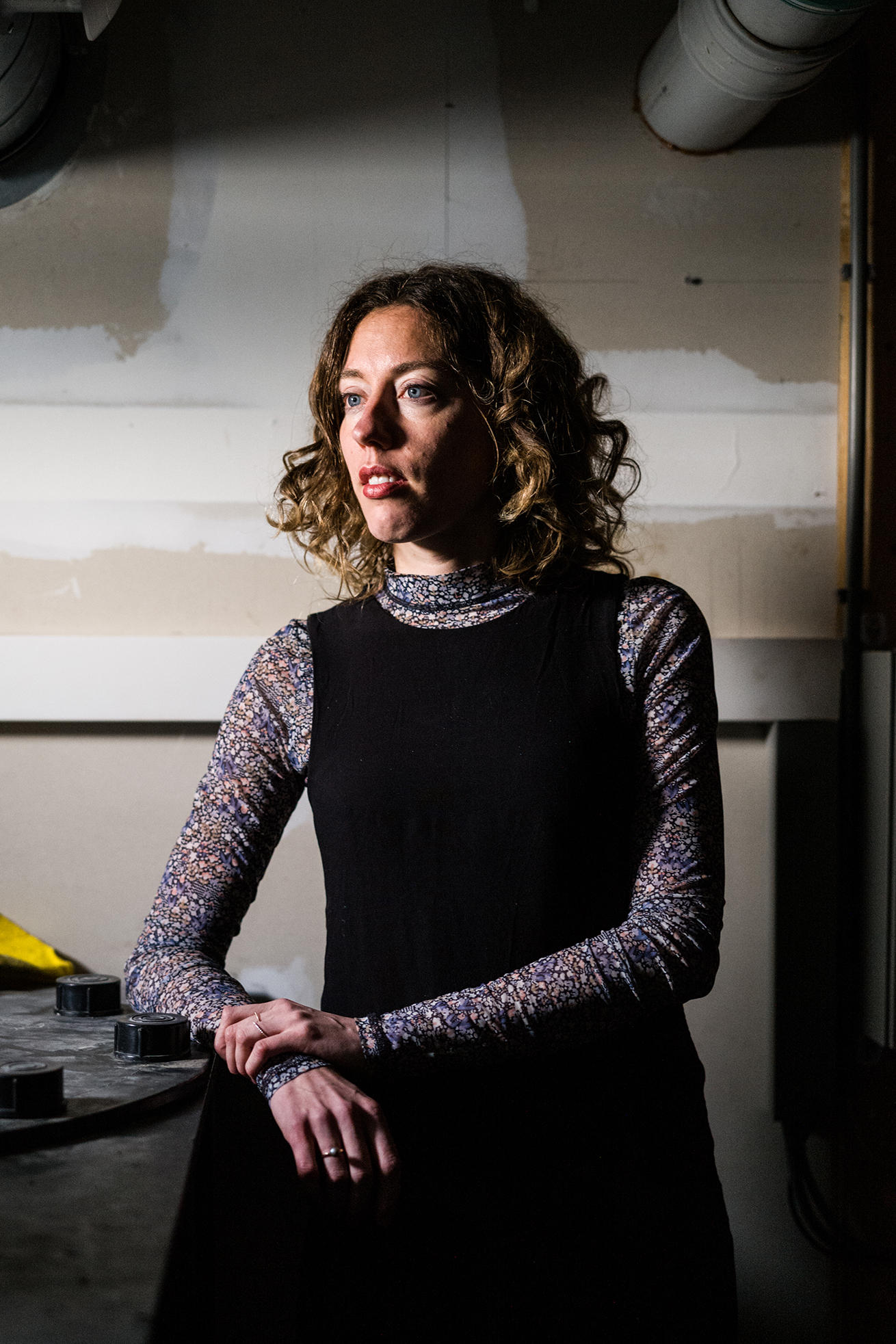
Marjan van Aubel. Portrait by Boudewijn Bollmann
During her stay in London, she regularly exhibited in Milan. With the RCA graduates at Salone Satellite, with Current Table, a table to sit on that also does something active: it produces electricity. With her Well Proven Stools, she exhibited at Ventura Lambrate for the first time. ‘Margriet Vollenberg has done so much in the past ten years by giving young talents a platform’, she says. And the government also plays an important role in the Dutch design world. Marjan van Aubel and Jólan van der Wiel built Energies Unseen at Rossana Orlandi with a subsidy from the Stimuleringsfonds. ‘Such a large installation, in which we played with natural phenomena such as gravity and photosynthesis, can only be created with a grant’, she says. ‘That’s still a possibility and it’s why the Netherlands is so prominently present in Milan’, she believes. ‘With these grants, Dutch designers can play around longer and do research. In England, they are unfamiliar with this phenomenon, so designers start working more commercially by designing saleable products. Dutch designers aren’t always aware of their luxury position, says Marjan, who lived in London for seven years.
But Instagram is not sufficient in all cases. For installations like her Power Plant, the physical experience is important. For this greenhouse of transparent solar glass in which you can harvest food and energy at the same time, people’s reaction is important. ‘I want to see them react, and to see the interaction’, says Marjan. ‘I’ve tried to create an experience with pink LED light, something you can’t see on Instagram’, she says.
Milan is still the place to meet people. ‘It is definitely an important fair. You meet fellow designers, the audience, and companies, and you get to know new people, especially at Bar Basso’, she says. Here Van Aubel met later clients. She is in talks with major glass manufacturers and the automotive industry, and she received the Swarovski Young Emerging Talent Medal in 2015 and the Designer of the Future Award in 2017 in collaboration with Design Miami. Van Aubel now collaborates with scientists, engineers, and companies such as Swarovski, TNO, and ECN (Energy Research Centre Netherlands), which supplied the solar cells for the Swarovki crystals in her Cyanometers.
Instead of presenting herself, the brand showed her Cyanometers at Swarovski Palazzo during Milan Design Week last year. A site-specific installation in a greenhouse in the enormous courtyard of Palazzo Serbelloni. This year, the brand is showing the prototypes, which have been taken into production: a hanging lamp, a standing lamp, and a wall lamp with different lighting programmes. ‘It’s a luxury to work with a brand like this’, is her experience. It has already brought her into contact with a gallery owner in London. He placed seven Current Windows in front of the windows of his Greek Street gallery where passers-by could charge their phones.
This interview was published in The Dots magazine nr. 16 and distributed during the Milan Design Week 2019 and produced in collaboration with Dutch Design Daily

